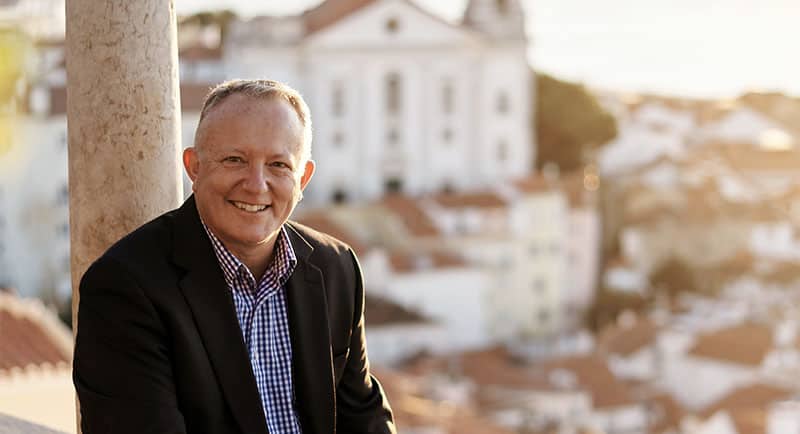The Cannes Lions International Festival of Creativity has wrapped up for 2023, with the event having brought together those that work in creative communications and advertising from every corner of the planet.
An event that has been at the top of its game for so long is sure to have seen some changes in the time it’s been operating. In light of this, Mediaweek caught up with Pat Murphy, Cannes LBB panellist and founder and CEO of global advertising production consultancy MCA to chat about the changing landscape of Cannes.
In your view, how has Cannes evolved over the years?
“Cannes has evolved significantly over the years, transforming from a gathering primarily focused on celebrating and sharing great work to a more commercialised event. This year I noticed there were even more companies prepared to ‘splash the cash’ to make their mark at the festival. The presence of large tech companies and the emphasis on extravagant displays and performances have changed the atmosphere. However, Cannes still remains a platform for industry professionals to come together, learn from each other, and explore new innovations in advertising.”
With the increasing commercialisation of Cannes, how can the festival maintain its creative essence?
“To maintain its creative essence amidst increasing commercialisation, Cannes should prioritise celebrating outstanding creative work and focus on actively fostering an environment that encourages more collaboration, knowledge-sharing, and inspiration among industry professionals. Emphasising the core value of creativity and providing platforms for meaningful discussions and networking can help preserve the festival’s creative soul. Additionally, they should make greater efforts to increase accessibility and diversity by promoting more underrepresented voices and engaging with emerging talent. Cannes can expand its reach and engage a wider audience, while still striking a balance between commercial viability and artistic integrity.”

What are some ways to optimise the use of AI in advertising while avoiding potential ethical considerations in the creative process?
“AI was the talk of the town this year at Cannes. The lid is firmly off the genie’s bottle and there are so many conversations about how to regulate it and how to maximise its use in the creative process whilst also not falling into the IP and ethics trap. Here are some ways to optimise the use of AI in advertising while addressing ethical considerations:
• Ensure transparency in AI-driven processes, making it clear when and how AI is utilised
• Establish clear agile guidelines and ethical frameworks for AI implementation within your organisation
• Regularly review and evaluate the impact of AI on creative decision-making to avoid biases or controversial outputs
• Involve diverse teams in AI development and implementation to minimise inherent biases and ensure inclusive representation
• Stay informed about AI advancements, regulatory developments and the latest legislation to adapt strategies accordingly and maintain ethical and up-to-date practices. This space will no doubt continue to evolve. That’s why we’ve collaborated with top law firm Osborne Clarke on how best to manage AI in production and the creative process to ensure we stay ahead.
What can advertising industry professionals do to move beyond lip service and make real progress in sustainability?
“This was a big topic for panels throughout the week. Unfortunately, sustainability has become a buzzword. As an Industry, we must do better and tackle damaging behaviours like greenwashing head-on. We all need to take more accountability. It’s important actions speak louder than words and businesses should set clear sustainability goals and targets within their organisations.
“To make real progress, the industry mentality needs to be flipped. Sustainability is not an afterthought where we are seeing AdGreen calculations being conducted after a production is complete. It needs to be embedded at brief and then considered at every stage of the process from strategy, creative and through to production. For example, while Covid has accelerated remote shooting capabilities across the board, we’re seeing things quickly revert back to standard behaviours when it comes to travelling for a shoot now that pandemic impacts have subsided. Much of this is contributing to unnecessary carbon emissions and needs to be stopped from the get-go. Signing up to AdGreen is a great start but it must also translate to real action on the ground.
“This is why collectively, we must drive more collaboration across the lifespan of a campaign – whether that’s working with partners and suppliers that prioritise sustainability or embedding production experts early on in the creative process to work together towards intentionally reducing the carbon footprint of a shoot. Clients are increasingly embedding sustainability metrics when measuring their bottom line and they need great partnerships that can deliver amazing production and creative work that have sustainability as a key performance indicator. Everyone needs to be on board, so ongoing education and awareness building on sustainability is paramount to drive meaningful change.
“What we have been seeing is that the intentions are there but what we need now are processes and tools to drive real action. That’s why we’re leading the way, setting industry standards by committing to providing Net Zero options on production for our clients by 2025 and partnering with AdNetZero and AdGreen to drive the right behaviours both with clients and their creative partners.”
How can agencies and brands go beyond checkbox approaches and integrate DE&I into their strategies and practices?
“DE&I remains a recurring topic, and I often question why it continues to be discussed year after year – there clearly is too much talking and not enough action. The Ad industry is not getting its act together quickly enough, and many are still treating it like a tick-box exercise which is simply not good enough.
“Advertising is about speaking to the people. At the end of the day, advertising campaigns need to sell, this means our messages need to stay current to conversations and be accessible. We need diverse voices to make this happen. If we are staying stagnant and listening to the same voices in the room, we are absolutely not developing impactful campaigns.
“To truly make a difference, we must prioritise a people-first approach and actively promote diversity across every aspect of the business. It’s crucial not to let DE&I fall down the priority list and address it sporadically. Instead, committing to long-term DE&I goals and deeply embedding them within the organisational culture is essential. To effectively integrate DE&I into strategies and practices, agencies and brands can take the following steps:
• Conduct thorough diversity audits and assessments to identify gaps and areas for improvement
• Actively recruit and retain diverse talent, ensuring representation at all levels of the organisation
• Provide training and education on DE&I topics for employees and leadership teams
• Foster inclusive and safe spaces for marginalised voices within the workplace
• Invite internal DEI champions or external DEI experts to participate in sharing a diverse range of perspectives when making boardroom or C-level decisions
• Regularly review your roster of external suppliers and partners to ensure that they’re diverse and share the same DE&I mission. Establish KPIs around this to hold the business accountable and the results measurable
• Regularly review and assess the impact of their DE&I efforts, making adjustments as necessary
See Also: Mediaweek’s Cannes 2023 wrap – the top sessions, brand activations, and award winners
–
Top Image: Pat Murphy
